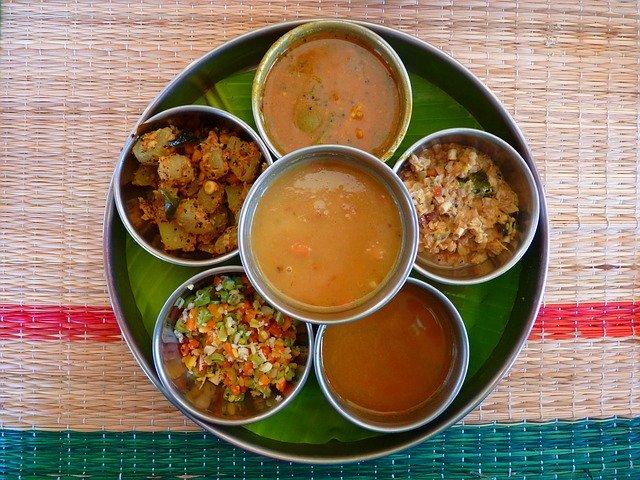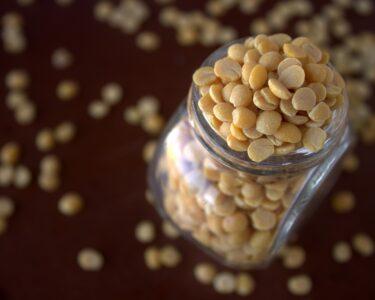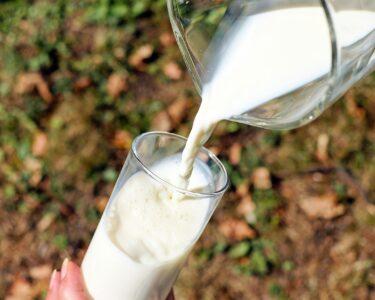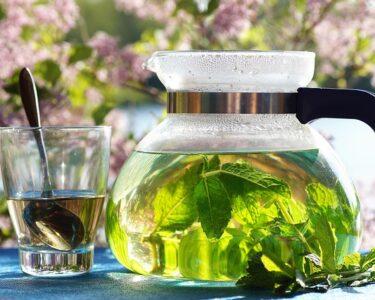Iron is an essential micronutrient required for normal human health. It is an integral part of our blood and muscle and is essential for maintaining good immunity and a healthy metabolism. (1) Anemia is a condition in which the number of red blood cells (RBCs), and consequently their oxygen-carrying capacity, is insufficient to meet the body’s physiological needs. (2) Iron deficiency is the most common cause of anemia but deficiencies of other nutrients (like including folate, vitamin B12, and vitamin A) in the diet may also cause developing anemia. Excessive blood loss due to any reason leads to anemia. Here is the Indian diet guide to prevent and treat anemia. Read the blog till the end.
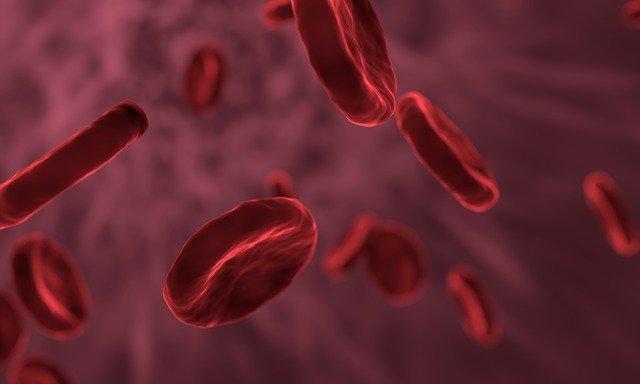
The magnitude of the Health Problem “anemia” in India
In India anemia is a severe public health problem that is widespread among all age groups. It is not only confined among vegetarians, rather frequently diagnosed among non-vegetarian people even after taking animal foods.
Table-1: Prevalence of anemia in different age groups
| Group | Prevalence (percent) | Severity of Anemia |
| Children below 5 years of age | 58% | |
| Adult Men (15-49 years) Urban MenRural Men | 23% 19% 25% | Mild (12%)Moderate (10%)Severe (1%) |
| Adult Women (15-49 years) Urban WomenRural Women | 53% 51% 54% | Mild (40%)Moderate (12%)Severe (1%) |
| Pregnant Women | 50% | |
| Lactating mothers | 58% |
- The prevalence of anemia among women is more than 60% among those from Jharkhand, Haryana, West Bengal, Bihar, and Andhra Pradesh.
- The scenario is comparatively better in Mizoram (25%), Manipur (26%), Nagaland (28%) and Goa (31%).
- The situation is more severe in the union territories of Dadra & Nagar Haveli (80%), Chandigarh (76%), and the Andaman & Nicobar Islands (66%).
What are the dietary factors affecting utilization of iron in our body (3)
- Total iron intake:
Adequate intake of iron-rich foods is essential for the maintenance of the good iron status of the body. Total iron intake depends on the selection of appropriate iron-rich foods, maybe it is plant food or it may be animal food.
- Type of iron present in food:
In animal foods, iron is present in heme form whereas it is present in a non-heme form in plant foods. (4)
The elemental iron present in supplements and iron-fortified foods is non-haem iron NHI. (5)
- Bioavailability of iron:
Bioavailability of the iron ingested, i.e., the absorbability of the iron from the diet is an important factor responsible for the iron status of the persons.
Haem iron (HI) is more efficiently absorbed from our gut than non-haem iron (NHI) because HI is absorbed directly across the cell membrane using a transporter but NHI can’t use it. Non-haem iron requires conversion of ferric iron to ferrous iron by reduction and then absorption.
Non-haem iron is primarily iron salts, present in plant and dairy foods and rendered soluble in the lumen of the stomach and duodenum. (6)
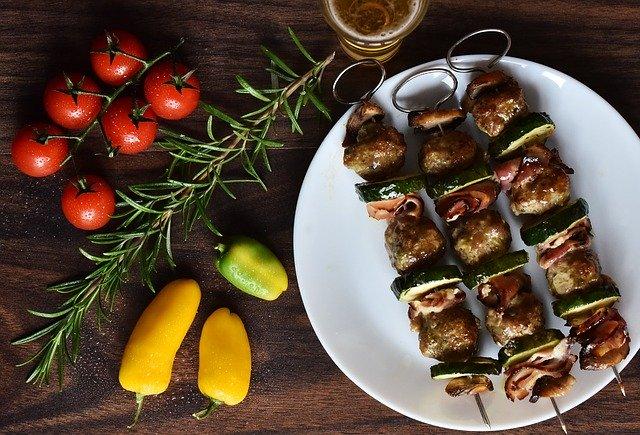
Sources of Iron
Iron is present in both animal and plant foods. Do you know which common foods are good sources of iron? See the table and know more.
Table-2: Sources of Haem Iron non- Haem Iron (7) (8)
| Food Groups | Sources of Haem Iron | Sources of Non-haem Iron |
| Animal Foods | Seafood like Oysters, mussels, Lean meat, Beef or chicken liver, Organ meats, Canned sardines, Beef, Poultry, Canned light tuna |
|
| Plant foods | Beans, Lentils, Spinach, Potato with skin, Nuts, Seeds, Vegetables | |
| Processed Foods | Fortified breakfast cereals, Enriched rice or bread, Dark chocolate (at least 45%) | |
| The elemental iron is present in supplements and iron-fortified foods. | Iron supplements Iron-fortified foods |
Indian diet guide to prevent & treat anemia
Anemia is a common problem of many of us, ranging from mild to moderate anemia. In most cases, anemia is present with overall deficiencies of many nutrients, like protein, iron, folic acid, vitamin-C, vitamin-B12, etc. For this reason, the intake of a well-balanced diet is essential for the rapid recovery of anemia.
Step-1: Basic Nutritional Needs of Anemic patients
First of all, we should know the basic needs of anemic individuals who have either low blood levels or low hemoglobin levels. Depending on the needs we should modify the diet of these persons.
Calories:
A well-balanced diet, providing adequate calories is essential. Usually, regular diets of anemic individuals have energy deficiency and/ or overall micronutrient deficiency. The calorie needs depend on the age, sex, and occupation of the person.
Proteins
It should be rich in protein because it is needed for the formation of blood.
Fats
The diet should contain around 15 to 25 percent fat. The fat should mainly come from vegetable oils, milk, and egg. Ghee and butter can be taken but in moderate amounts. Try to avoid vanaspati, margarine, or dalda.
Carbohydrates
The amount of carbohydrate intake depends on the total calorie need. It is always healthy to choose unprocessed, traditional natural foods (like atta, suji, rice, dals, oats, etc), instead of selecting commercially available processed foods like noodles, Maggie, corn flakes, muesli, etc.
Iron
The diet should contain an adequate amount of iron, both from iron-rich veg foods as well as animal foods.
Vitamin-C
Vitamin-C-rich fruits (citrus fruits, guava, amla, etc.) must be included in the diet of anemic persons.
Folic acid
For ensuring adequate folic acid intake, an adequate amount of fresh fruits should be included in the diet. Whole grains, green leafy vegetables, beans, peanuts, fresh fruits, etc. are good sources of folic acid. But unfortunately, folic acid present in foods is mostly destroyed by cooking and heating. (9) (10) So, anemic individuals should regularly consume seasonally available fresh fruits for meeting their folic acid needs.
Vitamin B12
Vitamin B 12 is an important vitamin, required for blood formation. So, the diet should be rich in this vitamin. Vitamin B12 is mainly present in animal foods, like meat, fish, poultry, eggs, milk, etc. but not in plant foods. So, deficiency of this vitamin is a common cause of anemia among vegetarians.
In the non-veg diet, regular intake of animal foods can supply all the needed amount of vitamin B 12. But in the vegetarian diet, milk, cheese, curds, and yogurt, etc. are an important source of vitamin B12. Fortified breakfast cereals are another important source of this vitamin. (11)
Intake of dried purple laver (nori) can also satisfy our Vitamin B12 needs of vegetarians. Dried purple laver is a natural plant product and it is suitable for most people in various vegetarian groups. (12)
Other vitamins and minerals
A diet rich in fresh seasonal fruits and vegetables not only supply vitamins and mineral, but it also provides a lot of antioxidants and dietary fiber.
Water
Drinking at least 3 liters of water is essential. Water plays several important roles in our body including the formation of blood.
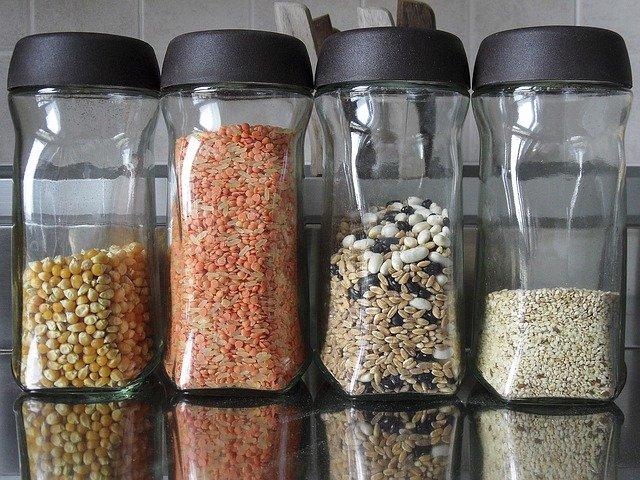
Step-2: Dietary Modification for Anemic persons
Diet for anemic patients should be a normal healthy diet with certain special considerations.
Ideal Breakfast
- Iron-rich traditional breakfast cereals should be chosen.
- Rice flakes or churah is an excellent source of iron, providing as high as 20mg of iron per 100g, making it suitable for the regular breakfast of anemic persons.
- Churah poha, rice flakes with milk, roasted flaked rice with nuts, etc can be taken.
- Semai (9.3mg iron /100g) cooked with milk (semai payesam), is also a good option.
- The iron content of whole wheat flour or atta (4.9 mg iron /100g) is higher than the refined flour or maida (2.7 mg iron /100g). So, for making chapati, puri or paratha, always use atta, rather than maida.
- Besan chila is another good option for anemic persons.
- Consumption of citrus fruit along with your breakfast is a healthy habit. It is a commonly prevalent myth that intake of sour fruits with other foods may cause acidity. There is no scientific basis behind this myth, rather it ensures better utilization of nutrients.
- For the elderly, a katori of muri or (murmura) along with finely chopped onion, tomato, and cucumber and sprinkled with little lemon juice is a good option.
- You should try to cook your breakfast items in iron tawa, it will further increase your iron content of breakfast. The use of non-sticky iron tawa is the easiest and cheapest option to increase the iron content of your meal.
- If you have little time for preparing the breakfast, then you can simply choose chana sattu. Take sattu with chopped onions, green chillies, and little oil and cumin seed powder. It is n an excellent source of protein and iron. You may also consume sattu in Bengali style, that sattu mixed with a banana and a teaspoon of sugar.
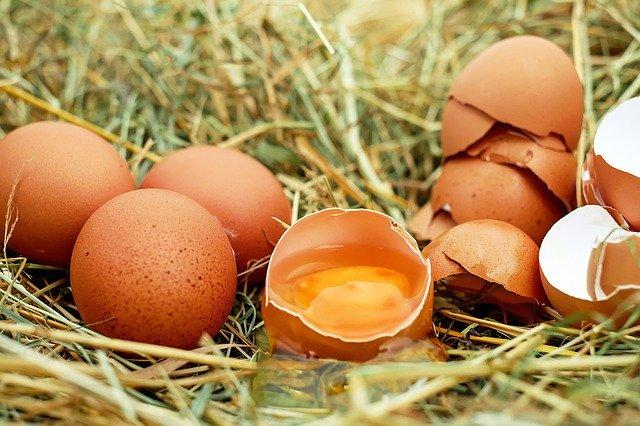
Ideal lunch
- Combination of cereals and pulses is able to meet our daily calorie needs.
- Cereals and pulses play an important role to satisfy our hunger. They fulfil most of the needs of carbohydrate, protein and fats. Moreover, they also supply many vitamins and minerals including iron. Among the cereals, it is better to choose whole wheat flour chapati or rice, instead of millets because iron is comparatively poor absorbed from the millets.
- Among the pulses, lentil contains comparatively more iron than chana dal or moong dal. So anemic persons consume lentil soup regularly.
- Always take half a lemon with each meal, that is with lunch and dinner. Lemon contains vitamin-C which increase the absorption and utilization of iron present in your meal.
- Dry coconut (7.8 mg of Iron /100g) should be regularly used in the cooking to increase the iron content of your diet.
- Green leafy vegetables are rich sources of iron. Utilize their iron potentials to maintain your good health and be free from immunity. Among the vegetables, cauliflower leaf is the richest source of iron, providing as high as 40mg of iron /100g of greens. So, don’t through the highly nutritious and tasteful leaves of the cauliflower, rather prepare yummy recipes with it, and enjoy it. Add half spoon of lemon juice with your freshly prepared green leaf recipe, it makes your recipe more tasteful and will increase the absorption of iron from it.
- Fresh Bengal gram leaves is another rich source of iron, providing 23.8 mg of iron /100g. Radish leaves or muli ka saag (18 mg of Iron /100g), parsley leave (17.9 mg of Iron /100g) and mustard leaves or sorso ka saag (16.3 mg of Iron /100g) are also good sources of iron. You can even cultivate these green leaves easily in your balcony garden or roof top garden. Take any of these tasteful greens regularly and away from anemia.
- You will be surprised to know that vegetables are not a good source of iron but they provide several other minerals and vitamins. So, you should include an adequate amount of vegetables in your daily diet for overall health benefits but should not depend on them for iron.
- It is a popular belief that plantain green or raw banana or green banana is a good source of iron, and is useful for the anemic persons. Indeed compared to other vegetables, green banana contains a higher amount of iron, providing 6.27 mg of iron /100g. However, cauliflower greens is a much richer source of iron, providing 40 mg of iron /100g which is almost 6 times compared to green banana.
Ideal Snacks
- Roasted Bengal gram can be taken as a snack because it is an excellent source of iron.
- You may take chana sattu sarbaat which is a tasty summer drink providing a lot of iron.
- Garden cress seeds in combination with jaggery and groundnuts can be used to prepare nadu. Garden cress seed is an excellent source of iron, providing 100mg of iron per 100g.
- A home-made chikki made with a mixture of sada til, kala til and watermelon seeds with jaggery is an excellent snack loaded with iron, protein, and carbohydrate, which is suitable for the kids, adolescents and pregnant and lactating women.
- Since fruits are loaded with several vitamins and minerals, anemic persons should consume enough fruits on a regular basis. They also provide good amounts of antioxidants and dietary fiber which are helpful to maintain good health.
- Among the fresh fruits, watermelon is the richest source of iron, providing 7.9 mg of Iron /100g but Strawberry (4.31 mg of Iron /100g) and pineapple (2.42 mg of Iron /100g) are also good sources of it.
- Amon the dry fruits, raisins (7.7 mg of Iron /100g), and dates (7.3 mg of Iron /100g) are rich sources of this mineral.
- Mixed fruit salad can be taken as an evening snack.
- Fruit shakes with curds is a good snack for the obese or diabetic persons. You can take Yoghurt watermelon shake or Yoghurt mango shake or Yoghurt apple shake. Such a shake will encourage your iron absorption.
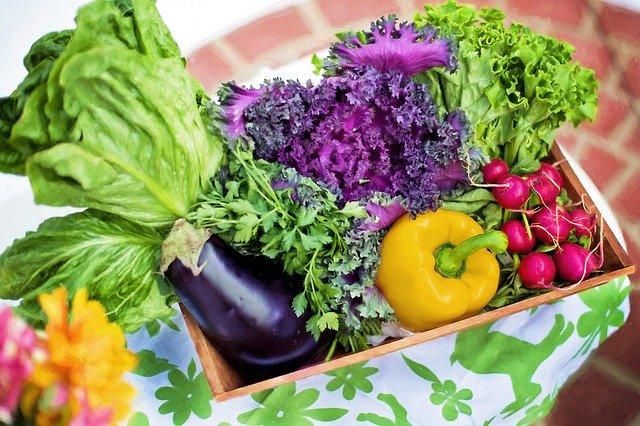
Ideal Dinner
- It is better for an anemic person to include some non-veg foods in your daily diet. Animal foods can be taken during lunchtime or dinner time.
- Those people who are habituated to take a vegetarian diet should include an adequate amount of milk, cheese, yogurt, etc. Any type of fermented milk product is a better option for an anemic person compared to milk because it contains lactic acid which helps in iron absorption.
- Curd rice is a good menu for an anemic person.
- The type of menu for the night meal should be almost the same with dinner. Dinner should be light, easily digestible and nutritious enough.
https://wellnessmunch.com/how-to-eat-a-veg-source-of-iron-rich-food/
Step 3: 14 Tips to Improve the bioavailability of Iron
The bioavailability of iron is approximately 14% to 18% from mixed diets that include substantial amounts of meat, seafood, and vitamin C (ascorbic acid, which enhances the bioavailability of nonheme iron) and 5% to 12% from vegetarian diets.
Haem iron is highly bioavailable and little affected by dietary factors. (13)
Other dietary components have less effect on the bioavailability of haem iron than nonheme iron. (14)
- Haem iron has a higher bioavailability than nonheme iron. So, include some non-veg foods in your daily diet. (15)
- Animal foods, particularly meat, fish, and eggs are a good source of iron. Moreover, iron is better absorbed from animal foods. The presence of animal protein in the diet also increases the absorption of iron from the non-veg foods.
- You should choose locally available, fresh, seasonal fruits within your budget. There is no need to include highly prised exotic fruits in your diet. Kela (Banana), Amrut (Guava), Ber (Indian jujube), bel (wood apple), nimbu (lemon), etc. are some commonly available cheap nutritious fruits that you can include in your daily diet. Fruits are not a good source of iron but they are rich in vitamin-C. The intake of vitamin-C improves iron absorption from the diet.
- Commonly available citrus fruits should be included like lemon, lime, orange, grapefruit, etc.
- Fermented milk products contain lactic acid which increases iron absorption from the foods. Include more curds, yoghurt and buttermilk in your diet.
- Phytic acid (inositol hexaphosphate) is commonly present in legumes (soybeans, blackbeans, lentils, mung beans, and split peas) and grains (like rice). This chemical compound inhibits iron absorption. Soak the cereals and /or pulses in excess water for 2 to 4 hours before cooking and discard the excess water. Soaking helps to reduce the phytate content of the plant foods and thus increase the availability and absorption of iron from plant foods. (16) (17)
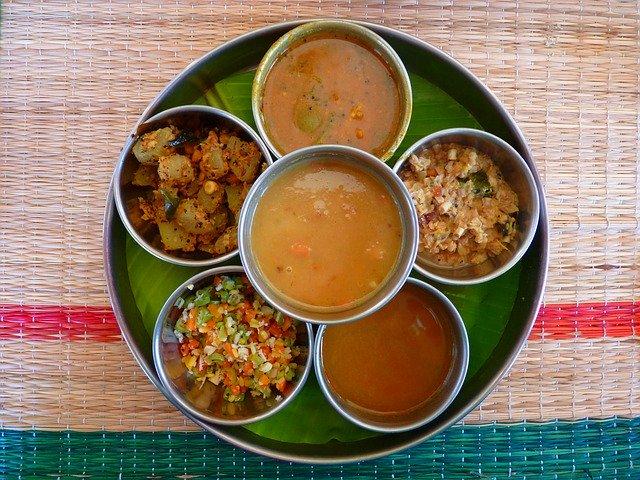
- Take more sprouted foods. Germination and sprouting increase the breakdown of phytic acid by phytase and thus reduce the phytate content of the food. Sprouting may reduce the phytate content by 40%. (18)
- It also increases the vitamin-C content of foods and reduces tannin content. (19) As a result iron bioavailability is greatly increased.
- Take more fermented foods like idli, dosa, fermented soy products, etc. Fermentation is an effective method for reducing the phytate content of foods.
- The bioavailability of iron is lowest in millet-based meals, while the rice and wheat-based meals had moderate to good bioavailability. It is better to make rice or wheat as a staple food rather than millet. (20)
- Calcium inhibits the absorption of both haem and nonheme iron. So, guys, please avoid taking calcium supplements after your lunch or dinner. (21)
- Avoid tea or coffee with meals. (22) Polyphenols markedly reduce the absorption of non-haem iron. Polyphenols are present in tea, coffee, cereal grain products, legumes, vegetables and fruits, herbs (like oregano), and red wine. Tannic acid is present in tea and coffee. So, the consumption of tea or coffee immediately after meals greatly reduces the iron absorption. Iron binds to the tannic acid in the intestinal lumen forming an insoluble complex that results in impaired absorption. So, be judicious, don’t drink tea or coffee half an hour before your meal to 3 hours after the completion of your lunch or dinner, because drinking a cup of tea or coffee will greatly reduce the absorption of iron.
- Adequate cooking of cereals and pulses increases the availability of iron from the cereals and pulses, so take well-cooked meals. Avoid undercooked recipes. You may use a pressure cooker for cooking cereals and /or pulses.
Bottom Line
Anemia is a common health issue in our society. If you are anemic, you should consume a balanced diet containing adequate amounts of calories, protein, iron, vitamin-C, vitamin-B12, and folic acids.
The selection of an iron-rich diet is very important for anemic persons. We should be careful to increase the availability of iron from the diet, to facilitate the absorption of iron from the diet, and finally utilization of the mineral (iron) for blood formation. Follow this Indian diet guide to prevent & treat anemia. All the best.

